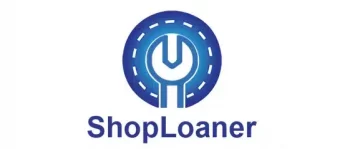By: Laura Tierney
Laura Tierney is the National Sales Manager for ShopLoaner.com. She has been discussing loaner fleet best practices with shop owners for years, giving them tips and advice on how to best manage a loaner fleet.
Speaking with several shop owners a day about their service loaner fleets, I find from my experience, their knowledge about fleet metrics and profitability varies greatly. Some have their fleet management down to a science and making a great deal of money by carefully tracking their loaner vehicles. Others have no loaner fleets, or very small fleets with many preferring to contract loaner management out to third party rental car companies.
Securing high dollar repairs is the key to generating a healthy bottom line. Loaner vehicle availability for a customer facing an expensive repair leaving them without transportation for an extended period, can help secure big-ticket sales. Providing alternative transportation for that customer locks them in at the independent shop, rather than having them take their vehicle to the service department at their local dealership. Having loaner vehicles to offer customers help independent shops compete with dealerships.
Part of what I do each day is explaining some basic principles to follow and metrics to track to ensure owners maximize the value of their fleet. Below I provide a summary of these principles and metrics.
Maximize Fleet Utilization
Another key to maximizing the value of your fleet is to ensure you have high fleet utilization. Since each vehicle in your fleet represents a cost to your shop, you do not want to have unused cars sitting idly on your lot. Additionally, given a set level of customer demand for loaner cars, the more loaner cars on your lot, the lower the fleet turn rate.
One issue that impacts fleet utilization is the number of days a vehicle remains with the customer after the RO closes out. It is critical that shops contact the customer as soon as the RO closes out to arrange for customer pickup or shop delivery of the customer’s vehicle.
As a best practice, we recommend that it clearly states on the rental agreement that the customer will be charged a certain rate/day for each day they keep the car after they have been notified that the RO is closed out. Adding this notice and making sure the customer understands, goes a long way to ensure cars are returned quickly. One of our customers stated their overdue vehicle days decreased over 90 percent once the customer realized they had to pay for driving the car beyond the RO closeout date.
Keep Track of Incidentals and Charge When Appropriate
Fuel and vehicle damage are costs that shops will absorb if the check in/check out process does not ensure fuel levels and pre- and post-rental damage is checked and recorded. Tolls can also be extremely costly if not monitored closely. We recommend that each loaner agreement state in bold language that the customer will be charged for fuel used, vehicle damage (including smoking) and any tolls. Toll collection can be tricky as often the toll comes in after the vehicle is returned. We recommend taking a credit card and authorizing a predetermined amount on the card via a PCI compliant service. If tolls appear later, the card can then be charged. Tolls are the most frequent charge that occur after the vehicle has been returned, but this same process can be utilized for any shop that suffers from post-return charges.
Decrease Non-Revenue Rentals
Many shops work to minimize no charge rentals and monitor metrics to track the number of no charge rentals they provide. Shops with a tight control over fleet usage will charge a customer a daily rate if their repair does not qualify for a loaner, recoup the daily rate from an ESP warranty claim, or only allow no-charge rentals or true loaner usage to customers with qualifying repairs. Do the work to be reimbursed for providing replacement vehicles. Most of the time it is as simple as submitting the rental/loaner agreement with the correct information.
Running a profitable loaner fleet can be challenging. However, we think adhering to some basic rules, tracking key metrics and putting a system in place to support the loaner process can make your loaner fleet a valuable asset, driving both new car sales and increasing service revenue.
# # #
